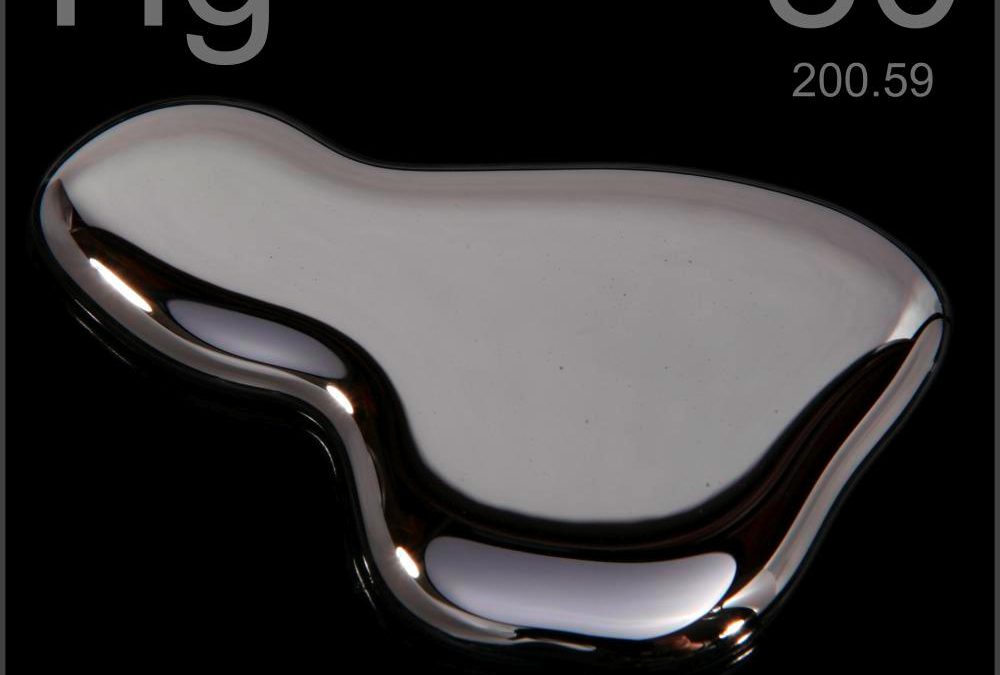
by Rick O'Connor | May 6, 2022
Imperiled (verb) – put at risk of being harmed, injured, or destroyed.
In 2021 the Florida Department of Environmental Protection classified 44 area waterways in the Pensacola Bay System as imperiled. Such designations are based on an environmental parameter making it unhealthy for one reason or another. When we think of an unhealthy body of water, many times we think of sewage. There are nine bodies of water in the Pensacola Bay System classified as imperiled due to the fecal bacteria concentrations within. There are another seven for bacteria levels high enough to close them for shellfish harvesting. This is a total of 16 bodies of water having bacteria issues (36% of the 44 designations).
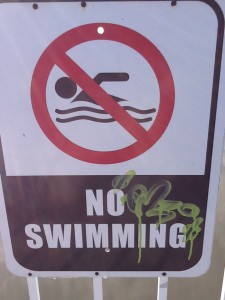
Closed due to bacteria.
Photo: Rick O’Connor
Low dissolved oxygen and fish kills is another parameter we think of. There are four waterways designated imperiled due to high nutrients (a cause of hypoxia and fish kills), and one for low dissolved oxygen readings itself. This is a total of five (11% of the 44 designations).
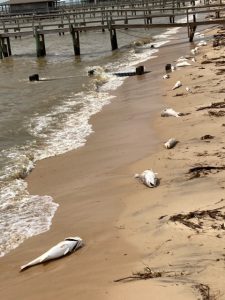
Dead redfish on the eastern shore of Mobile Bay.
Photo: Jimbo Meador
But you may be surprised to learn that 23 of the 44 imperiled water bodies (52%) are designated based on the mercury content of the fish sampled there.
Most people are aware of the mercury issue in fish. Many of those living in the Pensacola Bay area are aware of this issue locally, but they may not be aware that with the 2021 designations, it is the primary reason for many listed. To be fair, it is not that mercury issues are increasing, it may be more that there are 97 waterways in the Pensacola Bay System being considered for delisting in 2021 and those are listed for a variety of other issues. What it is stating is that with the 44 that remain imperiled, mercury is the primary cause.
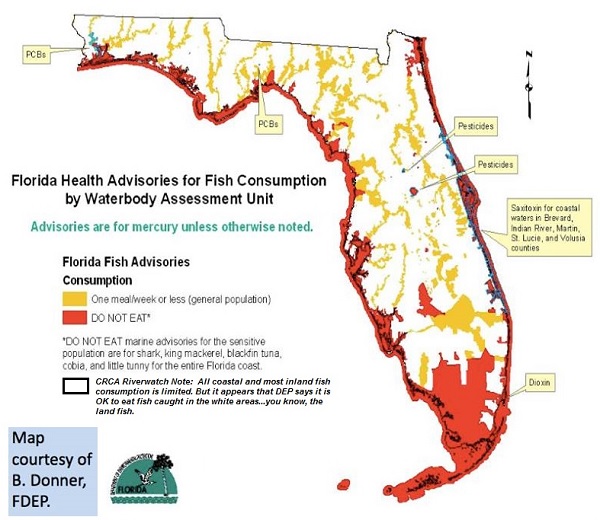
We have all heard of mercury in fish, but where is it coming from? What health problems does it cause? And is there anything that can be done to make these bodies of water healthier?
Mercury is a naturally occurring element on the periodic table. It is element #80, meaning it has 80 protons and electrons, one of the larger naturally occurring elements. It is a silver-colored liquid at room temperature, one of only two naturally occurring elements in the liquid phase at these temperatures – the other being bromine. It is sporadically found throughout the earth’s crust, usually combined with other elements. There are two forms of mercury – mercury (I) and mercury (II) – indicating the number of cations available for sharing or transferring in compound bonding. Mercury (II) is more common in nature.
The element has been of interest to humans for centuries. There are records of it buried beneath the Mayan pyramids, though we are not sure how it was used, and it was used in Chinese medicine centuries ago. The Spanish used it to help extract silver from mines during their colonial period around the world. It was also used in separating fir from skin in felt hat making in the 19th century. Hatters who used this method eventually had neurological problems and became known as “mad hatters”, an idea used in Lewis Carol’s Alice’s Adventures in Wonderland.
In more modern times it has been used in fillings for tooth cavities (including my own) and preserving specific vaccines. Being a good conductor of electricity and not of heat, it is used in numerous electrical components, fluorescent lighting, and batteries. Some cultures used it to help “whiten their skin” and a common use is in the processing and production of certain industrial chemicals. Today, due to the toxic properties of mercury, many of these uses are no longer.

Fluorescent lighting contains mercury.
Mercury is obtained for these uses by mining their ores. The most sought after ore is cinnabar, a red-colored rock found around the world. Mercury (II) sulflide (HgS) is a common compound found in cinnabar. When heated and oxidized it will produce sulfur dioxide and elemental mercury.
HgS + O2 à Hg + SO2
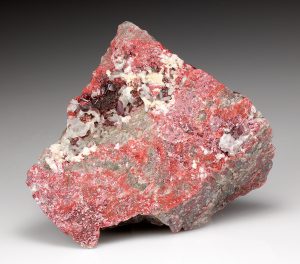
Cinnabar is the most common ore mined for mercury.
Photo: Classic Crystal
The problem with mercury is that it is toxic, and some forms of mercury are more toxic than others. The element is known to cause brain, kidney, and lung issues. It also can weaken the immune system. It is most known for the neurological problems it causes. Sensory impairment, lack of motor skill coordination, psychotic reactions, hallucinations, tremors and spasms have all been connected to exposure to mercury. There are concerns with the neurological development within the fetus if exposed to mercury and many of the health advisories target women of childbearing age who are pregnant or considering it. They have included the very young and the very old in their recommendations that these members of the population do not eat more than 6 ounces of fish (or shellfish) that have high mercury contamination.
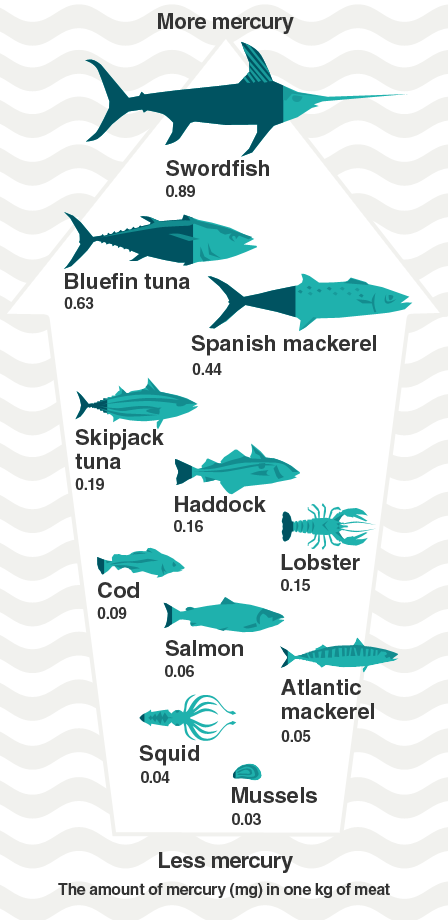
Mercury contamination in fish.
Image: BBC
The organic forms of mercury, dimethylmercury and methylmercury, are the more toxic forms. These are introduced to the environment both naturally and from human activity. Once in the aquatic environment they are absorbed by the phytoplankton (microscopic plants in aquatic environments). Methylmercury accumulates in lipids (fats) within the cell at relatively low concentrations (phytoplankton are not large). However, they are not passed by the creature. The slightly larger zooplankton (microscopic animals) feed on the phytoplankton and accumulate the mercury they have stored. Feeding on a lot of these, they accumulate even more mercury. The zooplankton are consumed by small fish, who eat a lot and accumulate even more mercury. Then the mid-sized fish consume them, and the larger fish consume those, and on and on. The top predators have accumulated enough methylmercury to be hazardous to human health IF they are consumed by people. This process of increasing the concentration of mercury through the food chain is known as biomagnification – “magnifying the problem”.
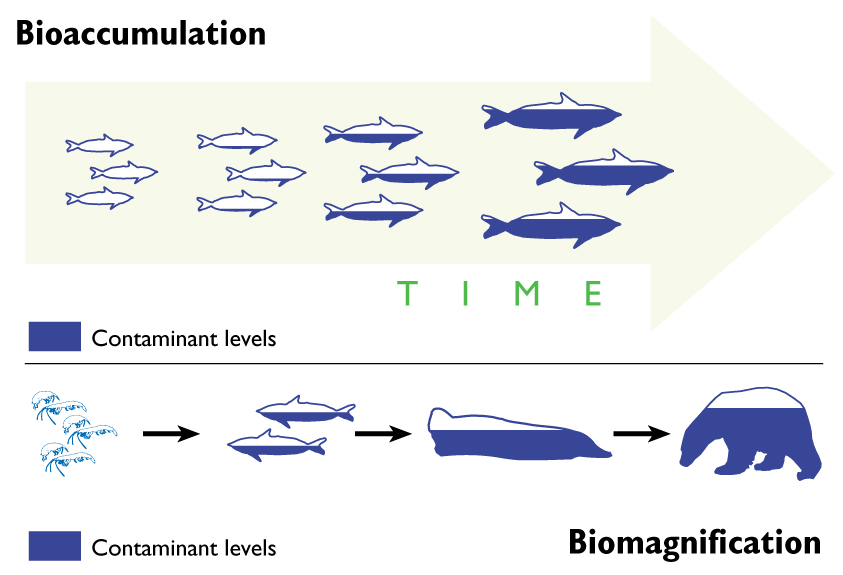
So, which fish are of concern?
Based on the Florida Department of Health for freshwater systems in Escambia County.
- Bluegill, Channel catfish, Largemouth bass, Long-eared sunfish, Red-eared sunfish, Spotted sunfish and Warmouth from the Escambia River system – you should not eat more than one/week.
- Do not eat chain pickerel or largemouth bass – and do not consume more than two red-eared sunfish from Crescent Lake.
- Lake Stone near Century FL – no more than two bluegill and sunfish per week and no more than one largemouth bass each week.
- From the Perdido River do not eat more than two bluegill or sunfish each week and do not eat largemouth bass from the Perdido River.
- The same species and regulations apply for the Yellow River system as well.
The following marine species are of concern….
Almaco jack, Atlantic spadefish, Atlantic croaker, Weakfish (trout), Black drum, Black grouper, Blackfin tuna, Bluefish, Cobia, Dolphin, Pompano, Gafftop catfish, Gag, Greater amberjack, Gulf flounder, Hardhead catfish, King mackerel, Ladyfish, Lane snapper, Bonito, Mutton snapper, Pigfish, Red grouper, Red snapper, Sand seatrout, Scamp, Shark, Sheepshead, Snowy grouper, Southern flounder, Southern kingfish, Spanish mackerel, Spot, Striped mullet, Vermillion snapper, Wahoo, White mullet, Yellow-edge grouper, and Yellowfin tuna.
In each case it is not recommended eating more than two servings a week. For a few, it is recommended that the most vulnerable people mentioned earlier not at ANY… Those would include Blackfin tuna, Cobia, King mackerel, Bonito, and Shark.
It is recommended that NO ONE eat king mackerel over 31 inches and any shark species over 43 inches in length.
I guess as you look at this list, you see fish species that you like. This list can lead folks to think… “I am just not going to eat seafood”. This would be a mistake. The Department of Health has found there are essential vitamins and nutrients provided be seafood that are missing if you do not eat them. They found additional problems in fetal development when seafood protein was left out of the mothers’ diet. So, the response would be… eat other seafood species you do not see on this list… or, if you see something you do like, no more than 1-2 6-ounce servings per week.
So, is there anything we can do about the mercury issue in our bay system?
Well, to have the biggest impact you will need to determine the biggest source. 33% of the mercury in our environment comes from natural sources, such as volcanic eruptions. We can do nothing about volcanic eruptions, or other natural sources, so we will need to look at anthropogenic (human) sources.
The larger sources would be anthropogenic, which account for 67% of the known mercury in the environment, focusing on these can make a large impact. Coming in at No.1 – producing electricity by burning coal. This accounts for 65% of the anthropogenic sources. Moving away from burning coal would make a huge difference. But that is easier said than done. Mining and burning coal are important for the economy of many communities. It is one of the cheaper methods of producing much needed electricity. But in addition to producing mercury compounds during the heating process, many other toxic compounds are produced and released as well – not to mention the amount of greenhouse gases produced during this process. Hence the name “dirty coal”. There are other methods of producing electricity and the solution would be to convert not only the power plants to these methods, but the coal dependent communities to this line of work. This one step would make a big difference.
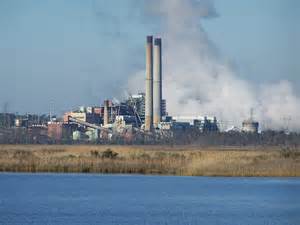
Power plant on one of the panhandle estuaries.
Photo: Flickr
At a much smaller scale, mining for gold produces 11% of the mercury from the mine tailings, cement production (7%), and incinerating garbage (3%). Though not a large player in this game, reducing the amount of solid waste burned each year would help reduce the mercury issue.
The takeaway here is that the number of imperiled waterways in the Pensacola Bay System have been reduced over recent years and we will look at this in another article. But for those that remain, mercury is the prime reason. It is also important to understand that mercury is a naturally occurring element and can not be broken down, so we have what we have – but, we can stop adding to the problem. Third, eating some seafood each week is good for you. You will just need to select species that are not problems or watch how much you eat if you prefer some of the listed species.
For more information on the 2021 imperiled waterways list visit
https://floridadep.gov/dear/watershed-assessment-section/content/final-lists-impaired-waters-group-4-cycle-2-basins
For more on the seafood safety species lists visit
https://dchpexternalapps.doh.state.fl.us/fishadvisory/
Other sources for this article included:
Wikipedia – https://en.wikipedia.org/wiki/Mercury_(element)
Miller, G.T., Spoolman, S.E. 2011. Living in the Environment. Brooks and Cole Cengage Learning. Belmont CA. pp. 674.
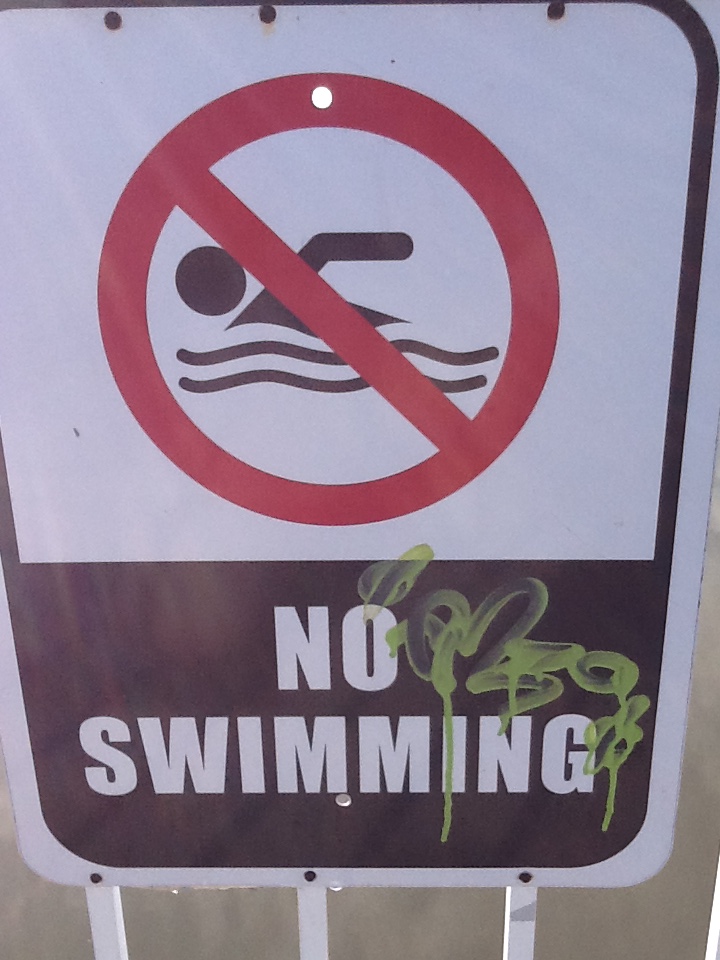
by Rick O'Connor | Feb 24, 2022
For many in the Pensacola Bay area, water quality is a top concern. Excessive nutrients, heavy metals, and fecal bacteria from run-off have all been problems. In recent years fecal bacteria has become a major concern, forcing both health advisories at public swimming areas, and shellfish harvesting closures. In a report from the Florida Department of Environmental Protection last modified in 2021, 43 sites in the Pensacola Bay area were verified as impaired and 11 of those (22%) were due to high levels of fecal bacteria1.

Closed due to bacteria.
Photo: Rick O’Connor
As the name implies, these are bacteria associated with the digestive tract and find their way into waterbodies via animal waste. Animal waste can harbor pathogenic organisms and contribute to algal blooms which leads to hypoxia (low dissolved oxygen in the water), and potential fish kills. As bad as hypoxia and fish kills can be, it is the health issue from the pathogens that are often the larger concern.
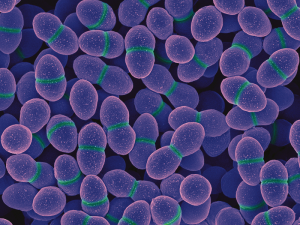
The spherical cells of the “coccus” bacteria Enterococcus.
Photo: National Institute of Health
In saline waters, the fecal bacterium Enterococcus is the species used for indication of animal waste. This bacterium is more tolerant of salt water than E. coli, or other fecal bacteria, and a better choice as an indicator for this reason. Enterococcus is found in the intestines for birds and mammals and enters waterways through their feces. Waterfowl, pets, and livestock can all be sources, but it is human waste that many point to when the bacteria counts are over the environmental thresholds set. Human waste enters the waterways either by septic or sewer overflows. It is the septic systems we will look at in this article.
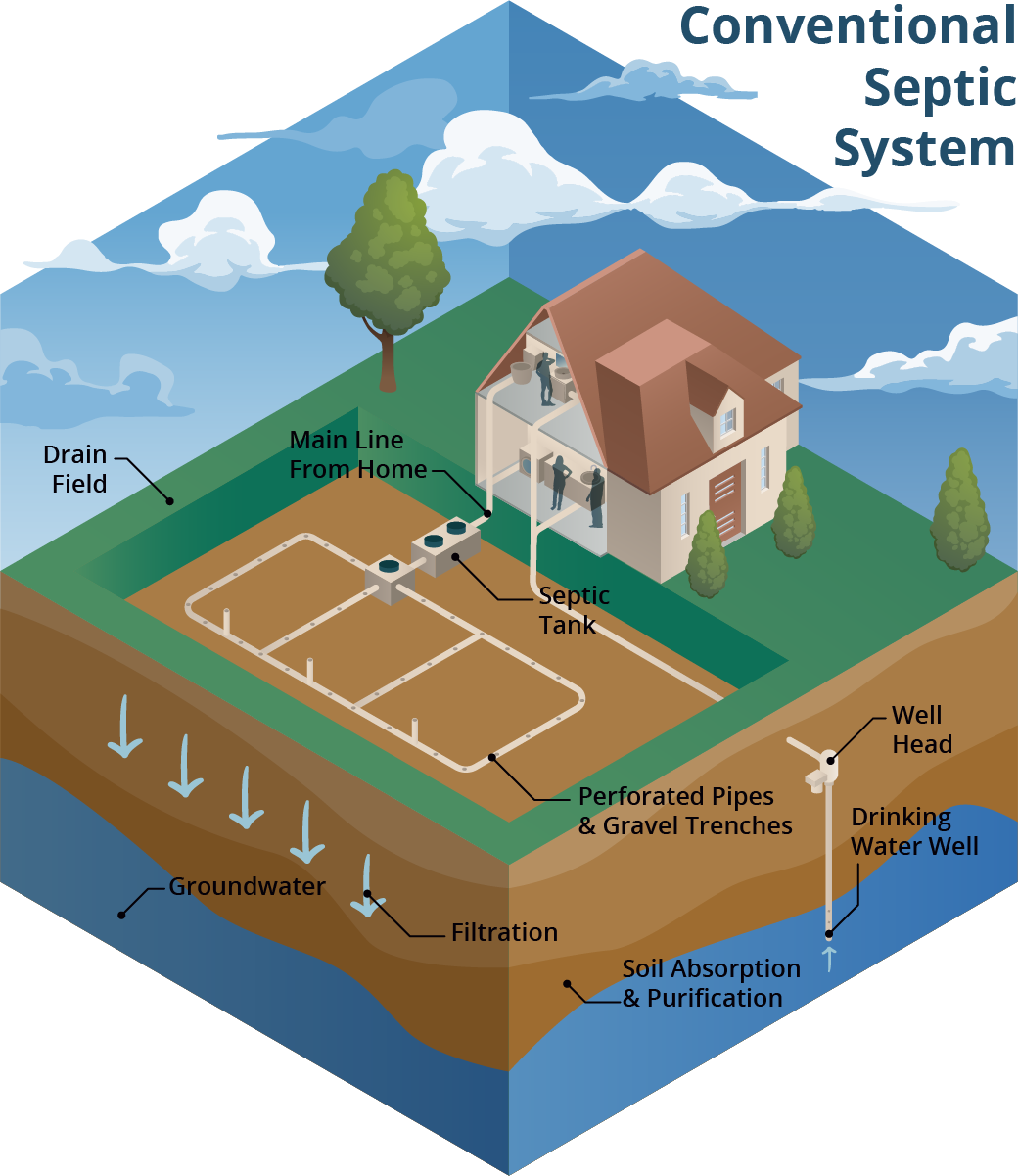
A conventional septic system is made up of a septic tank (a watertight container buried in the ground) and a drain field. Image: Soil and Water Science Lab UF/IFAS GREC.
How the septic system works…
The process of course begins when you flush. The wastewater leaves the commode and enters a pipe which leads to the septic tank outside. Here the wastewater separates. The solid waste will settle to the bottom forming a layer called sludge. Fats, oils, and grease float on water and form a top layer called scum. The untreated wastewater settles in the middle. This wastewater will drain from the septic tank into a series of smaller pipes and leach into a drain field. The drain field should be made of large grain material, like sand or gravel, that allows the filtration of the water as it dissipates into the environment. On paper this system should work well, and often does, but you can see where problems can occur.
- Was the septic system placed in the correct area? Often as a homeowner you have no control over where the tank is placed but there are regulations on this, and they should have been followed.
- Is there sufficient drain material for the effluent to effectively drain and filter (plenty of sand/gravel)?
- Is the site too close to the water table? Saturated ground will not allow for proper filtration and can create layers of untreated water to settle near the surface creating foul odors and leach into local waterways. Over the last decade the Pensacola area has seen an increase in the annual amount of rain. This increase can turn what was a suitable location into one that is no longer.
Again, many homeowners have no control over the placement of the septic but doing your due diligence when purchasing a home, you can do. Checking the situation of the septic can save you a lot of problems down the road.
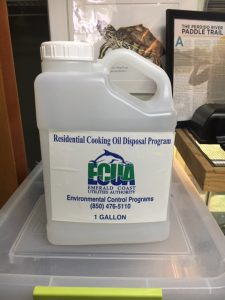
1-gallon container provided free to dispose of your oil and grease.
Photo: Rick O’Connor
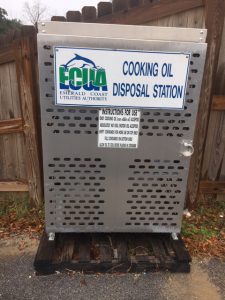
The FOG gallon containers are found in these metal cabinets placed around the county.
Photo: Rick O’Connor
- What are you flushing down the commode? Here you DO have control.
- Excessive amounts of fats, oils, and grease will increase the scum layer, and this can enter the pipes leading to the drain field causing clogging of those. Clogs can cause backups into the tank and leaks near the top as well as backups into your home. Not only can these overflows create problems in the home, but they can also end in our waterways creating water quality problems. So, what do you do with the oil and grease left over from cooking? In Escambia County, the Emerald Coast Utility authority provides what they call the FOG program2. This program provides free 1-gallon plastic jugs to place your oil and grease in. You can find these in metal cages at locations around the county, there is one at the extension office. You take it home, fill it up, and return it for a new one.
- Disposable wipes can be flushed, but they do not degrade. Excessive amounts of disposal products flushed into your septic system will certainly create clogs in the drainpipes and backups into the lawn, waterways, and your home. Do not flush these! Toss them into the trash can.
- Interestingly we are learning that milk will solidify after pouring down the drain. It forms solid chunks resembling concrete and can also create backups and overflows. This is relatively newly discovered problem. One suggestion is to pour unwanted milk on your garden, but you do not want to flush it down the drain to your septic tank.
- There has been discussion on chemical products marketed to clean your septic. Many of our experts believe that these can alter the good microbes within the tank that breakdown the solid waste layer, the sludge. This is not something you want.
- The last one is water itself. Not that you cannot flush water down the drain, but excessive amounts can create situations where either the scum or the sludge layers reach the drainpipes and form clogs. Do not use excessive amounts of water from different sources in your home at the same time. Do not overload the system.
- Driving over the septic tank or drain field.
Most understand that this can cause problems. It can compact the soil being used for the drain field, thus making it less effective at draining and filtering. It can also cause cracks in both the tank and the drainpipes, which can create leaks that allow untreated wastewater to travel away from the drain field. Be careful where you use heavy vehicle traffic on your lawn.
- Pumping out your septic system.
This is something few people do. The untreated wastewater should flow into the drain field and percolate through the sand/gravel bed. However, the scum and sludge do not drain and need to be pumped periodically. The recommended cycle for pump outs is once every 3-5 years. Again, this is something most homeowners do not do until backup problems occur. We do recommend having your system pumped on that cycle.
- Convert to a sewer system.
This is not an option for everyone, and we know for some in which it is, they are not eager to do so. But converting to a sewer takes the maintenance issue off the homeowner and onto the local utility. The conversion can be expensive but, in some communities, there are cost share programs to help with this. Check with your local utility for more information.
If placed, used, and maintained properly septic systems can last 25-30 years and not be a major problem for local waterways. Converting to a sewer system can help, but there are also problems here. We will address those in our next post.
Reference
1 Florida Department of Environmental Protection. 2021. Verified Lists for Group 4 Basins Cycle 2 – Pensacola Bay.
https://floridadep.gov/dear/watershed-assessment-section/documents/verified-lists-group-4-basins-cycle-2-pensacola-bay.
2 Fats, Oils, and Grease (FOG). Emerald Coast Utility Authority (ECUA).
https://ecua.fl.gov/live-green/fats-oils-grease.

by Andrea Albertin | Oct 2, 2020
If your private well was damaged or flooded due to hurricane or other heavy storm activity, your well water may not be safe to drink. Well water should not be used for drinking, cooking purposes, making ice, brushing teeth or bathing until it is tested by a certified laboratory for total coliform bacteria and E. coli.
Residents should use bottled, boiled or treated water until their well water has been tested and deemed safe.
- Boiling: To make water safe for drinking, cooking or washing, bring it to a rolling boil for at least one minute to kill organisms and then allow it to cool.
- Disinfecting with bleach: If boiling isn’t possible, add 1/8 of a teaspoon or about 8 drops of fresh unscented household bleach (4 to 6% active ingredient) per gallon of water. Stir well and let stand for 30 minutes. If the water is cloudy after 30 minutes, repeat the procedure once.
- Keep treated or boiled water in a closed container to prevent contamination
Use bottled water for mixing infant formula.
Where can you have your well water tested?
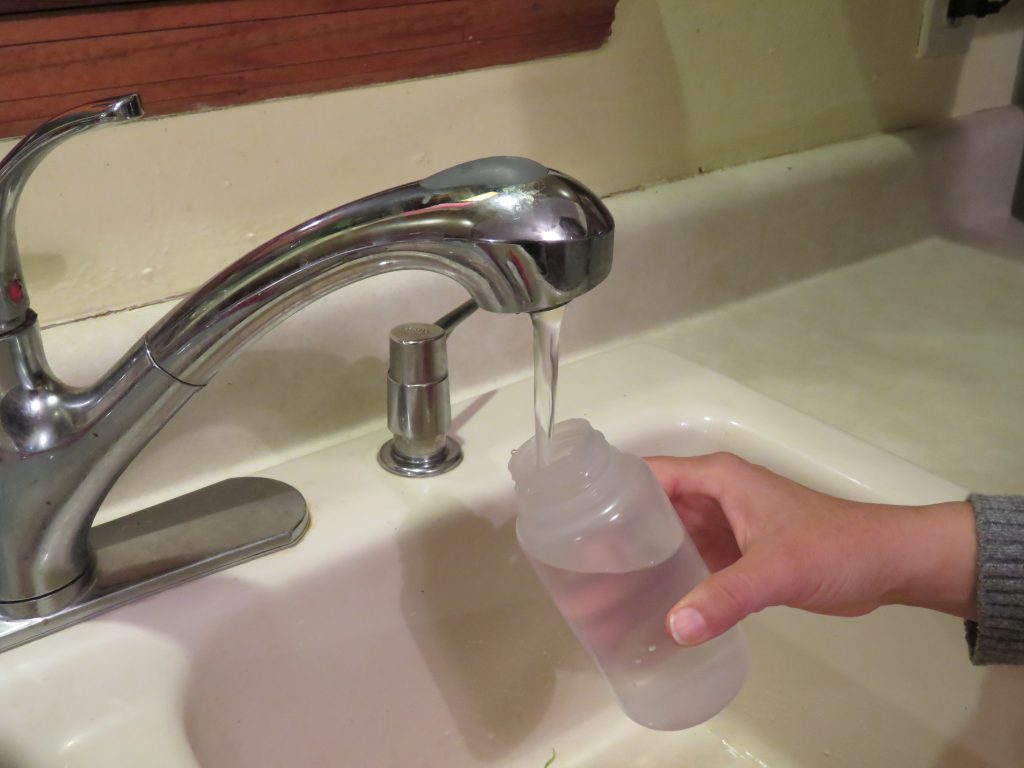
Contact your county health department for information on how to have your well water tested. Image: F. Alvarado Arce
Most county health departments accept water samples for testing. Contact your local department for information about what to have your water tested for (they may recommend more than just bacteria), and how to collect and submit the sample.
Contact information for Florida Health Departments can be found here: County Health Departments – Location Finder
You can also submit samples to a certified commercial lab near you. Contact information for commercial laboratories that are certified by the Florida Department of Health are found here: Laboratories certified by FDOH
This site includes county health department labs, commercial labs as well as university labs. You can search by county.
What should you do if your well water sample tests positive for bacteria?
The Florida Department of Health recommends well disinfection if water samples test positive for total coliform bacteria or for both total coliform and E. coli, a type of fecal coliform bacteria.
You can hire a local licensed well operator to disinfect your well, or if you feel comfortable, you can shock chlorinate the well yourself.
You can find information on how to shock chlorinate your well at:
After well disinfection, you need to have your well water re-tested to make sure it is safe to use. If it tests positive again for total coliform bacteria or both total coliform and E. coli call a licensed well operator to have the well inspected to get to the root of the problem.
Well pump and electrical system care
If the pump and/or electrical system have been underwater and are not designed to be used underwater, do not turn on the pump. There is a potential for electrical shock or damage to the well or pump. Stay away from the well pump while flooded to avoid electric shock.
Once the floodwaters have receded and the pump and electrical system have dried, a qualified electrician, well operator/driller or pump installer should check the wiring system and other well components.
Remember: You should have your well water tested at any time when:
- A flood occurred and your well was affected
- The color, taste or odor of your well water changes or if you suspect that someone became sick after drinking your well water.
- A new well is drilled or if you have had maintenance done on your existing well
- There has been any type of chemical spill (pesticides, fuel, etc.) into or near your well
The Florida Department of Health maintains an excellent website with many resources for private well users: FDOH Private Well Testing and other Reosurces which includes information on potential contaminants and how to maintain your well to ensure the quality of your well water.
















